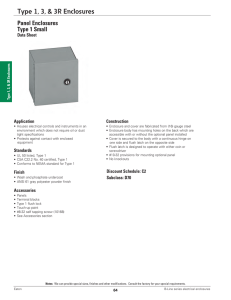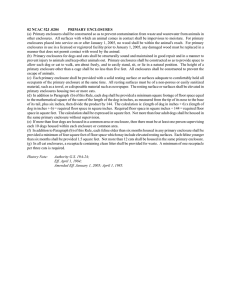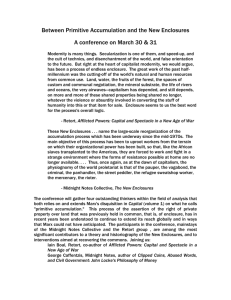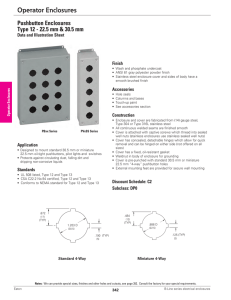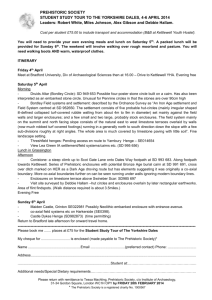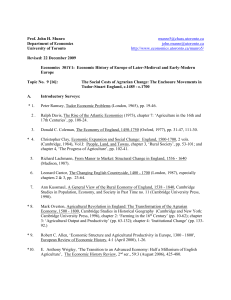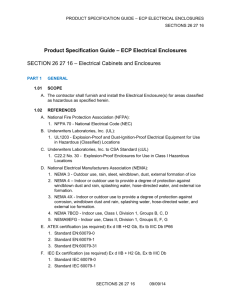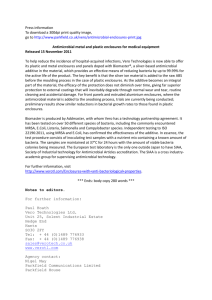ce 507: building science and technology
advertisement
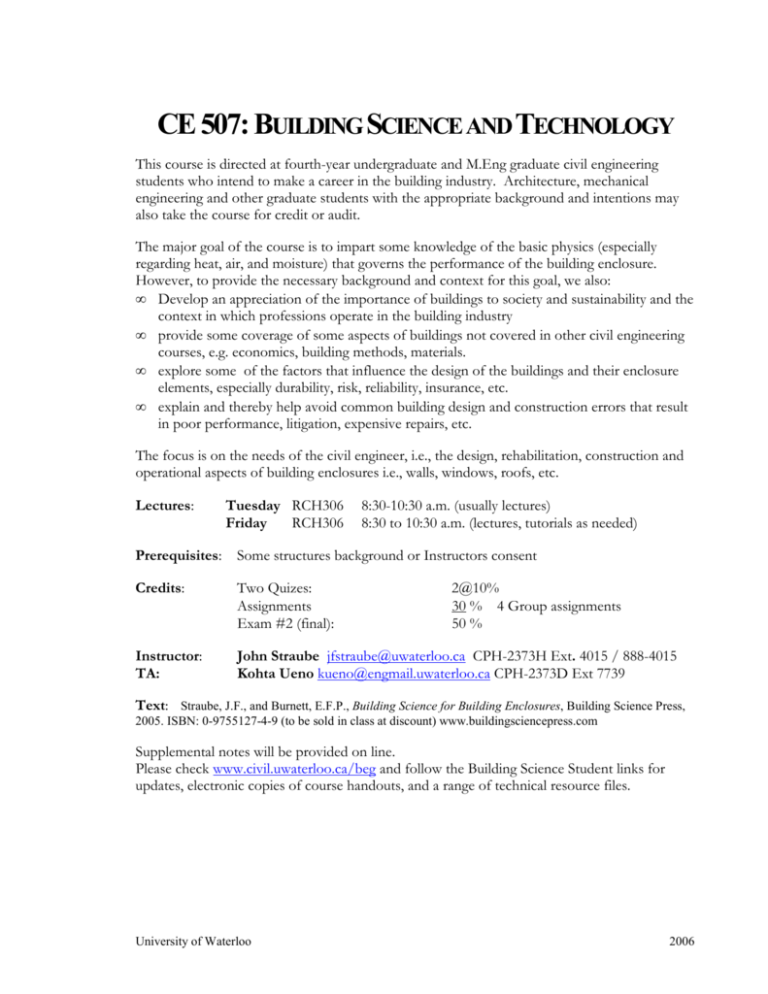
CE 507: BUILDING SCIENCE AND TECHNOLOGY This course is directed at fourth-year undergraduate and M.Eng graduate civil engineering students who intend to make a career in the building industry. Architecture, mechanical engineering and other graduate students with the appropriate background and intentions may also take the course for credit or audit. The major goal of the course is to impart some knowledge of the basic physics (especially regarding heat, air, and moisture) that governs the performance of the building enclosure. However, to provide the necessary background and context for this goal, we also: • Develop an appreciation of the importance of buildings to society and sustainability and the context in which professions operate in the building industry • provide some coverage of some aspects of buildings not covered in other civil engineering courses, e.g. economics, building methods, materials. • explore some of the factors that influence the design of the buildings and their enclosure elements, especially durability, risk, reliability, insurance, etc. • explain and thereby help avoid common building design and construction errors that result in poor performance, litigation, expensive repairs, etc. The focus is on the needs of the civil engineer, i.e., the design, rehabilitation, construction and operational aspects of building enclosures i.e., walls, windows, roofs, etc. Lectures: Tuesday RCH306 Friday RCH306 8:30-10:30 a.m. (usually lectures) 8:30 to 10:30 a.m. (lectures, tutorials as needed) Prerequisites: Some structures background or Instructors consent Credits: Two Quizes: Assignments Exam #2 (final): Instructor: TA: John Straube jfstraube@uwaterloo.ca CPH-2373H Ext. 4015 / 888-4015 Kohta Ueno kueno@engmail.uwaterloo.ca CPH-2373D Ext 7739 2@10% 30 % 4 Group assignments 50 % Text: Straube, J.F., and Burnett, E.F.P., Building Science for Building Enclosures, Building Science Press, 2005. ISBN: 0-9755127-4-9 (to be sold in class at discount) www.buildingsciencepress.com Supplemental notes will be provided on line. Please check www.civil.uwaterloo.ca/beg and follow the Building Science Student links for updates, electronic copies of course handouts, and a range of technical resource files. University of Waterloo 2006 Topic Textbook Chapter INTRODUCTION: What is Building Science, Why is it important? The Building and its Functions The Building Enclosure and its Functions 1 1 2 ASSIGNMENT #1 –6% PHYSICS OF ENERGY, MATTER, AIR AND WATER States of Matter Heat and Energy – definitions and units Radiation and Stefan-Boltzman’s Equation Gas Laws and the Atmosphere Psychrometrics and Water vapor 4 BUILDING ENCLOSURES: THERMAL CONSIDERATIONS Fourier's Law and Heat Flow Predicting/Calculating Heat Flow and Temperaure Gradients Thermal Bridging and Dynamics of Building Enclosures 5 QUIZ #1 - 10% ASSIGNMENT #2 -6% BUILDING ENCLOSURES: WATER VAPOUR CONSIDERATIONS Fick's Law and Water Vapour Flow Water Vapour Flow Through Building Enclosures Diffusion Wetting and Drying Analysis Air Leakage Condensation – Calculation Control of Interstitial Condensation 6 10 ASSIGNMENT #3 - 6% BUILDING ENCLOSURES: AIR MOVEMENT CONTROL Bernoulli/Darcy's Law and Air Flow Wind and Buoyancy (Stack) Effects on Buildings Air Leakage Control: Air Barriers, Pressure Control 7 QUIZ #2 - 10% DESIGN: THE VARIABLES AND THE CONSTRAINTS The Outdoor Environment: Climate and Weather The Indoor Environment and Human Comfort The Limit States: Durability and Performance 3 BUILDING ENCLOSURES: FROM PRINCIPLES TO PRACTISES Moisture Engineering: General Principles Driving Rain and Rain Penetration Control Strategies Example Walls Systems: Masonry, EIFS, Curtainwall, Precast 9 12 PROJECT - 12% GIVEN TIME ... Moisture and Materials Low-Rise Residential Housing Building Movements and Joints Roofs Systems: Pitched and Flat Below-grade Walls and Floors Windows and Curtainwalls Energy Consumption and Human Comfort University of Waterloo 8 2006
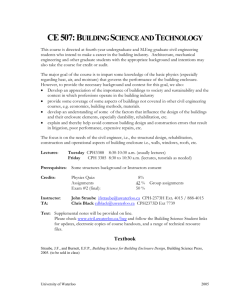
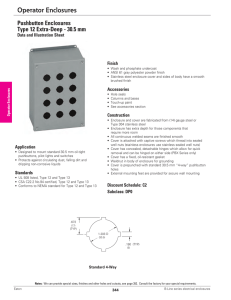
![[Physician Letterhead] [Select Today`s Date] . [Name of Health](http://s3.studylib.net/store/data/006995683_1-fc7d457c4956a00b3a5595efa89b67b0-300x300.png)
